#historical houses
Text
Historical house tours are so confusing. They’ll be like, “When we head upstairs, pay special attention to the Blue Room, where Colonel Thomas J. Shmoshington carved a suggestive message on the bedpost.”
And you’ll walk into a room with bright blue walls and be like, “Oh, I guess this is the Blue Room?”
And they’ll be like, “NO! This is the Red Room! It’s called the Red Room because of the red velvet curtains and canopy bed!” Then they take you into a white room with yellow floral wallpaper trim and go, “THIS is the Blue Room!”
And when you humbly ask why it’s called the Blue Room, they’ll scoff at you like you were born yesterday (rather than in 1789) and be like, “It’s called the Blue Room because it USED TO BE blue! The entire mansion is painstakingly restored to its appearance in the year 1812, which happens to fall during the two-year span in in which Abigail Shmaddison redid the room in white and yellow in a flight of fancy. After spending some time away in a sanitarium, she regained her senses and changed it back to blue. An archaeologist found an original scrap of the yellow wallpaper beneath 13 layers of paint and we were able to match it perfectly with this pattern, which was of course developed by Q.B. Zippitydoo & Sons in London and available for purchase only in 1812. Any more questions?”
So you hold your tongue until you enter a big green room that is so incredibly green that it can’t possibly be anything but the Green Room. It has acid green walls. It has bright green curtains. It has forest green tablecloths. There are ivy motifs carved in the ceiling. Cautiously, you venture, “So this is the Green Room?”
And they say, “NO! This is the parlor!”
14K notes
·
View notes
Text

Lucius B. Mantonya Flats - Historical building in Chicago
#lucius b mantonya flats#historical houses#historical buildings#chicago illinois#chicago#united states#america
136 notes
·
View notes
Note
ahh working in historical houses sounds like such an interesting experience! I notice you mention some of them being haunted - have you or your coworkers ever had any ghosty experiences? I'm a new follower, so sorry if it's something you've been asked about before! hope you're having a lovely day
No worries! Thanks for the well-wishes, and I send you the same.
Yes, I and many people I know have had ghost encounters at our workplaces. Much as I roll my eyes at people who assume every historical house must be haunted...well, some of them are. But it can become very normal when you're dealing with it every day. A lot of museums have little rituals the staff have adopted to keep the ghosts happy, often as simple as saying "good morning" and "good night" when opening and closing. My current museum isn't even supposed to be haunted, and I still do that just in case, to be polite.
Also, ghost encounters are often pretty unexciting. A light going on or off with no explanation, hearing footsteps when nobody's there, objects being moved, doors opening or closing a bit, motion detectors beeping for no apparent reason, etc. are among the most common you hear about. It's not usually that scary, and you're here to do a non-ghost-related job, so. You just learn to coexist. Say hello now and then, ask for behaviors you don't like to please stop. Swap stories with other heritage site workers. It's part of the industry.
The most dramatic experience I've had at work was hearing a staff entrance door open and close (complete with the door sensor ding) and footsteps in the breakroom nearby, when nobody onsite was in that area. One of my coworkers at that museum had the elevator door repeatedly open and close behind her during a tour, when a guest asked if the house was haunted. She wasn't scared- just annoyed at the ghost for getting the visitors off-topic.
And that's a big reason you may be at a haunted site and not know it: unless there's a dedicated ghost tour, we generally don't like talking hauntings with guests. Some museum workers don't believe in them (rare at heritage sites, but it does happen), and even the ones who do often consider it an irritating distraction.
I mean, see it from our perspective. We've poured so much time and energy into researching this site, learning the tours, studying and working with the objects on display, fundraising, doing maintenance and cleaning, or any of a hundred and one other tasks. We all want to talk about the site, the people who inhabited it, the moment in time it represents, the world around it and how it relates to our current world, etc. And here comes someone who's watched one too many horror movies, ignoring all our hard work because they just want to know "IS IT HAUNTED?!?!?!"
Now, the person probably does not mean to come off that way. We are aware of this. Please do not be ashamed or feel bad for wondering about ghosts at a historical house museum; that's perfectly normal. As I said, a lot of us not only believe, but believe we've had encounters at work. It only takes a few bad apples, though- a few tourists who came solely as thrillseekers, or to mock the site simply because it's an old house -to make a museum worker jaded. We're not trying to make snap judgments or be snobs; we're just Tired. Even when I worked at a haunted site, I would tell visitors it wasn't just to keep the tour on track. And I will do it again the next time I'm in that situation, too.
If you want to talk ghosts on a house museum tour, here is my advice:
Wait until the end of the tour, catch the guide alone, and quietly ask your question. I can't guarantee you'll get an honest answer, even then- and some sites genuinely aren't haunted, so "no" is sometimes the truth. But I know I'd be much more likely to open up about a haunting if the person seems aware that asking during the tour would derail things.
If you have an experience, feel free to let the guide know- again, after the tour and quietly. Unless it's something really scary that you can't control your reaction to (understandable), or dangerous, or a bunch of other people notice it, too, please do not bring it to the attention of anyone outside your party. Yes, it is very interesting that you saw a curtain move on its own, but if you call it out I'll never get the tour back on-subject.
So there's a bit of a primer on the topic of ghosts in house museums. Hope it was helpful/interesting!
90 notes
·
View notes
Photo
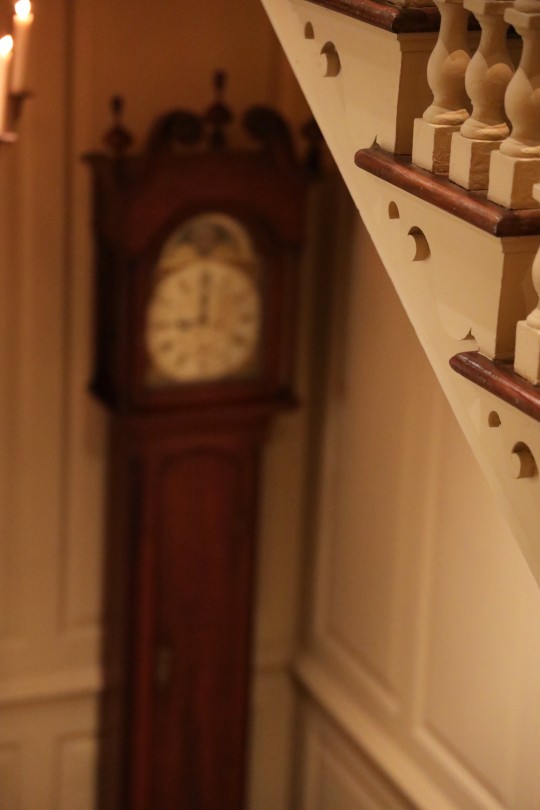
by Elizabeth Johnson-Wold
#original photographers#photographers on tumblr#stairs#clock#grandfather clock#historical houses#interiors#winterthur
18 notes
·
View notes
Text


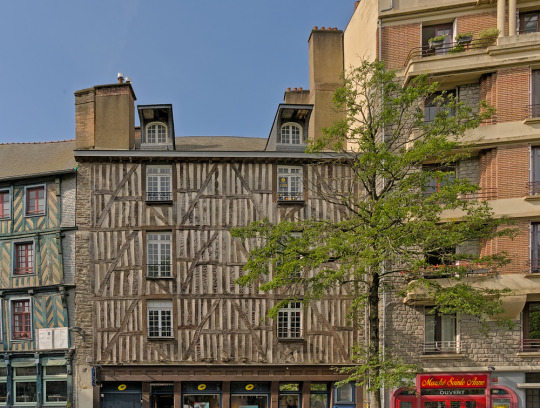

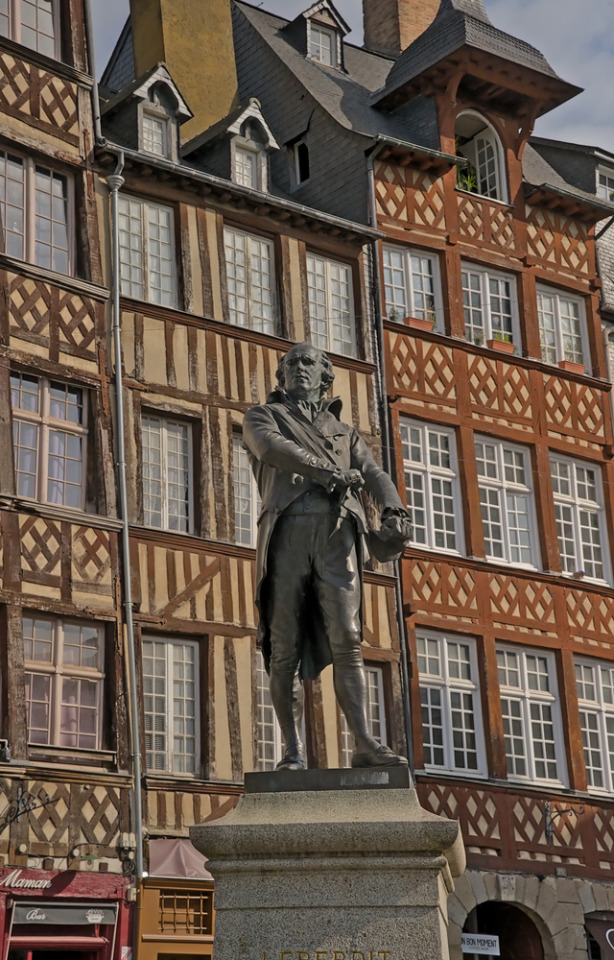

Half-timbered houses, Rennes
#rennes#france#half-timbered#timber framing#architecture#photography#historical houses#original photographers#photographers on tumblr#lensblr#original photography#pws#wanderlust#travel
51 notes
·
View notes
Note
Wait wait wait wait
La Fayette’s house has the same name as Hamilton’s????
Hello Anon,
well, technically yes. The residence of the Hamilton’s was named "The Grange" while the preferred home of the La Fayette’s was named Château de la Grange-Bléneau (La Grange for short.) La Fayette inherited la Grange from his wife Adrienne who in her turn inherited it from her mother. After La Fayette’s death, ownership of la Grange passed to Virginie and after her passing to Georges and his children.
While both places were names "Grange", it is not a highly specific name like "Monticello" or "Mount Vernon". "Grange" (or variations thereof) is in fact a very common name that can be found in literature (for fictional houses), for a great number of "real" houses or as town names.
I hope that made things clear and I hope you have/had a most fantastic day!
#ask me anything#anon#alexander hamilton#marquis de lafayette#la fayette#la grange#adrienne de noailles#adrienne de lafayette#georges washington de lafayette#virginie de lafayette#historical houses#american history#french history#history
14 notes
·
View notes
Text

all RIGHT:
Why You're Writing Medieval (and Medieval-Coded) Women Wrong: A RANT
(Or, For the Love of God, People, Stop Pretending Victorian Style Gender Roles Applied to All of History)
This is a problem I see alllll over the place - I'll be reading a medieval-coded book and the women will be told they aren't allowed to fight or learn or work, that they are only supposed to get married, keep house and have babies, &c &c.
If I point this out ppl will be like "yes but there was misogyny back then! women were treated terribly!" and OK. Stop right there.
By & large, what we as a culture think of as misogyny & patriarchy is the expression prevalent in Victorian times - not medieval. (And NO, this is not me blaming Victorians for their theme park version of "medieval history". This is me blaming 21st century people for being ignorant & refusing to do their homework).
Yes, there was misogyny in medieval times, but 1) in many ways it was actually markedly less severe than Victorian misogyny, tyvm - and 2) it was of a quite different type. (Disclaimer: I am speaking specifically of Frankish, Western European medieval women rather than those in other parts of the world. This applies to a lesser extent in Byzantium and I am still learning about women in the medieval Islamic world.)
So, here are the 2 vital things to remember about women when writing medieval or medieval-coded societies
FIRST. Where in Victorian times the primary axes of prejudice were gender and race - so that a male labourer had more rights than a female of the higher classes, and a middle class white man would be treated with more respect than an African or Indian dignitary - In medieval times, the primary axis of prejudice was, overwhelmingly, class. Thus, Frankish crusader knights arguably felt more solidarity with their Muslim opponents of knightly status, than they did their own peasants. Faith and age were also medieval axes of prejudice - children and young people were exploited ruthlessly, sent into war or marriage at 15 (boys) or 12 (girls). Gender was less important.
What this meant was that a medieval woman could expect - indeed demand - to be treated more or less the same way the men of her class were. Where no ancient legal obstacle existed, such as Salic law, a king's daughter could and did expect to rule, even after marriage.
Women of the knightly class could & did arm & fight - something that required a MASSIVE outlay of money, which was obviously at their discretion & disposal. See: Sichelgaita, Isabel de Conches, the unnamed women fighting in armour as knights during the Third Crusade, as recorded by Muslim chroniclers.
Tolkien's Eowyn is a great example of this medieval attitude to class trumping race: complaining that she's being told not to fight, she stresses her class: "I am of the house of Eorl & not a serving woman". She claims her rights, not as a woman, but as a member of the warrior class and the ruling family. Similarly in Renaissance Venice a doge protested the practice which saw 80% of noble women locked into convents for life: if these had been men they would have been "born to command & govern the world". Their class ought to have exempted them from discrimination on the basis of sex.
So, tip #1 for writing medieval women: remember that their class always outweighed their gender. They might be subordinate to the men within their own class, but not to those below.
SECOND. Whereas Victorians saw women's highest calling as marriage & children - the "angel in the house" ennobling & improving their men on a spiritual but rarely practical level - Medievals by contrast prized virginity/celibacy above marriage, seeing it as a way for women to transcend their sex. Often as nuns, saints, mystics; sometimes as warriors, queens, & ladies; always as businesswomen & merchants, women could & did forge their own paths in life
When Elizabeth I claimed to have "the heart & stomach of a king" & adopted the persona of the virgin queen, this was the norm she appealed to. Women could do things; they just had to prove they were Not Like Other Girls. By Elizabeth's time things were already changing: it was the Reformation that switched the ideal to marriage, & the Enlightenment that divorced femininity from reason, aggression & public life.
For more on this topic, read Katherine Hager's article "Endowed With Manly Courage: Medieval Perceptions of Women in Combat" on women who transcended gender to occupy a liminal space as warrior/virgin/saint.
So, tip #2: remember that for medieval women, wife and mother wasn't the ideal, virgin saint was the ideal. By proving yourself "not like other girls" you could gain significant autonomy & freedom.
Finally a bonus tip: if writing about medieval women, be sure to read writing on women's issues from the time so as to understand the terms in which these women spoke about & defended their ambitions. Start with Christine de Pisan.
I learned all this doing the reading for WATCHERS OF OUTREMER, my series of historical fantasy novels set in the medieval crusader states, which were dominated by strong medieval women! Book 5, THE HOUSE OF MOURNING (forthcoming 2023) will focus, to a greater extent than any other novel I've ever yet read or written, on the experience of women during the crusades - as warriors, captives, and political leaders. I can't wait to share it with you all!
#watchers of outremer#medieval history#the lady of kingdoms#the house of mourning#writing#writing fantasy#female characters#medieval women#eowyn#the lord of the rings#lotr#history#historical fiction#fantasy#writing tip#writing advice
29K notes
·
View notes
Photo
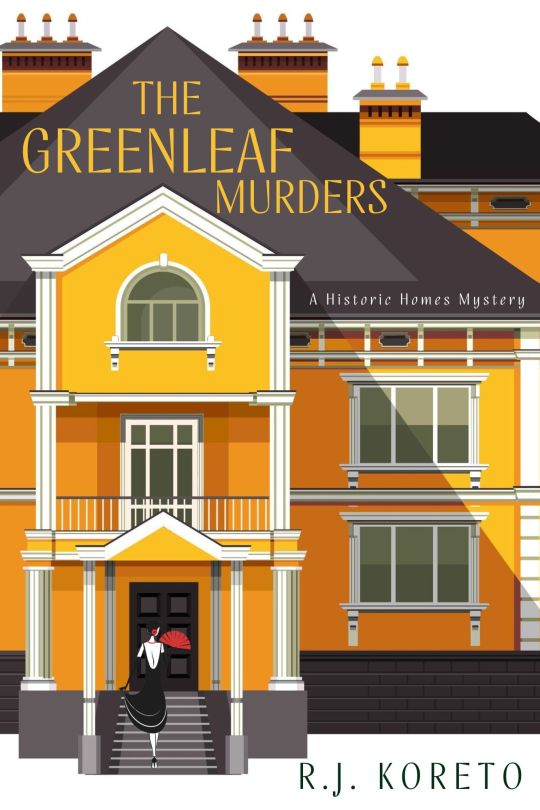
The Greenleaf Murders by R.J. Koreto
Young architect Wren Fontaine lands her dream job: restoring Greenleaf House, New York’s finest Gilded-Age mansion, to its glory days. But old homes have old secrets: Stephen Greenleaf—heir to what’s left of his family’s legacy—refuses to reveal what his plans are once the renovation is completed. And still living in a corner of the home is Stephen’s 90-year-old Aunt Agnes who’s lost in the past, brooding over a long-forgotten scandal while watching Wren with mistrust.
Wren’s job becomes more complex when a shady developer who was trying to acquire Greenleaf House is found murdered. And after breaking into a sealed attic, Wren finds a skeleton stuffed in a trunk. She soon realizes the two deaths, a century apart, are strangely related. Meanwhile, a distraction of a different kind appears in the form of her client’s niece, the beautiful and seductive Hadley Vanderwerf. As Wren gingerly approaches a romance, she finds that Hadley has her own secrets.
Then a third murder occurs, and the introverted architect is forced to think about people, and about how ill-fated love affairs and obsessions continue to haunt the Greenleafs. In the end, Wren risks her own life to uncover a pair of murderers, separated by a century but connected by motive. She reveals an odd twist in the family tree that forever changes the lives of the Greenleafs, the people who served them, the mansion they all called home—and even Wren herself.
Book Links: Amazon | Barnes & Noble | BookShop.org | Goodreads | Level Best Books
My Review:
The Greenleaf Murders is the first in a new cozy series and a quite entertaining story, even if a bit slow at the beginning.
If you love historical houses and love stories with quite a number of twist this is the right story.
I wasn't a fan of Wren at beginning but she grew on me and I appreciated her personality and how she is able to function as investigator.
The cast of characters is well developed and I liked them.
The mystery is solid, full of surprising twist and it kept me guessing.
I can't wait to read the next story.
Recommended.
Many thanks to RJ Koreto and Partners in Crime for this digital copy, all opinions are mine
The Author:
R.J. Koreto is the author of the Historic Home mystery series, set in modern New York City; the Lady Frances Ffolkes mystery series, set in Edwardian England; and the Alice Roosevelt mystery series, set in turn-of-the-century New York. His short stories have been published in Ellery Queen’s Mystery Magazine and Alfred Hitchcock’s Mystery Magazine, as well as various anthologies.
In his day job, he works as a business and financial journalist. Over the years, he’s been a magazine writer and editor, website manager, PR consultant, book author, and seaman in the U.S. Merchant Marine. Like his heroine, Lady Frances Ffolkes, he’s a graduate of Vassar College.
With his wife and daughters, he divides his time between Rockland County, N.Y., and Martha’s Vineyard, Mass.
Catch Up With R.J. Koreto:
RJKoreto.com
Goodreads
BookBub - @rkoreto1
Instagram - @rjkoreto
Twitter - @RJKoreto
Facebook - @RJKoreto
1 note
·
View note
Text

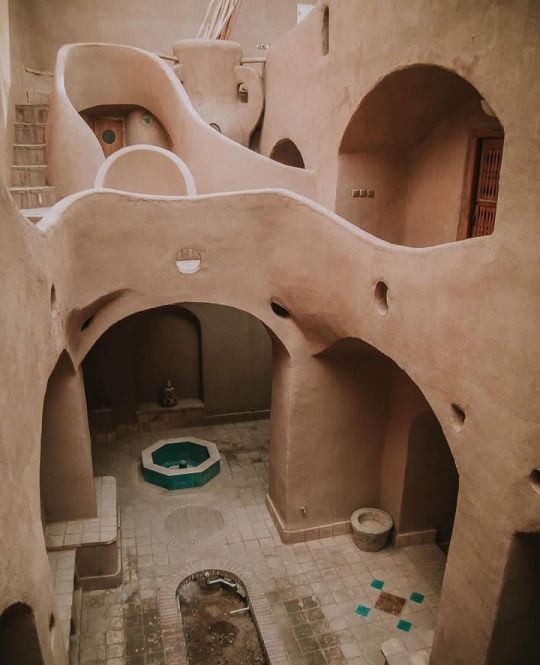
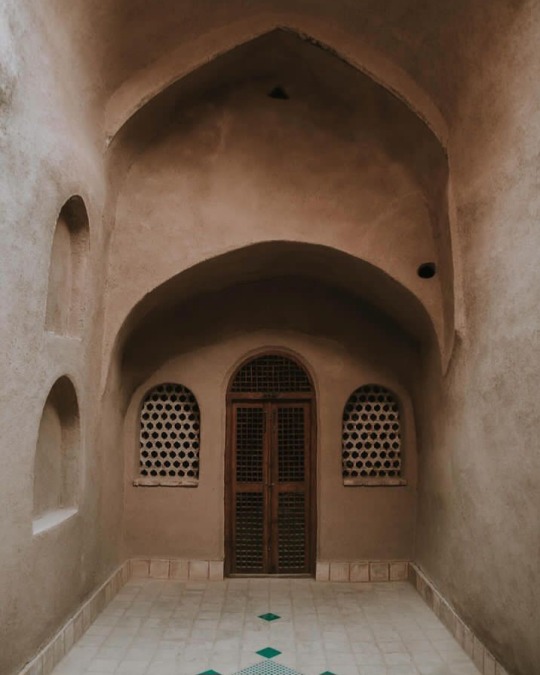
Akhavan House/ Kashan/ Iran
Photography: abolfazl sadr
#iran#persian#iranian#middle east#persia#travel#farsi#art#culture#architecture#kashan#persian architecture#persian art#traditional house#historical
3K notes
·
View notes
Text


The Queen of the North
Potentially random illustration but I had the idea in my head and a new brush I wanted to try out…. So… here we are (*´▽`*). Keeping with my theme of revisiting parts of previous designs and adding them to backgrounds/scenes. I also want to keep challenging myself, and going for more painterly styles is very much out of my comfort zone. What do you think? I had a bit of fun, learned some things, tested some things out, maybe I’ll try more in this style? (And before you ask yes I know there are supposed to be weirwood leaves, I didn’t have the energy to include them, that’s just the way it is).
I am the artist! Do not post without permission & credit! Thank you! Come visit me over on: instagram.com/ellenartistic or tiktok: @ellenartistic
#queen of the north#redesigning game of thrones#game of thrones#valyrianscrolls#character design#costume design#ellenart#lnart#redesigning heroines#historical fashion#historical costuming#valyrian scrolls#sansa stark#house stark
2K notes
·
View notes
Text

I’ve been trying to read the ace novel to practice reading Japanese and I find it really funny how deuce describes ace like he’s the heartthrob surfer dude male lead in some 2010s Disney film
Anyways here’s an ace since I was thinking about him
#one piece#portgas d ace#tried to simplify down my coloring process a tiny bit#this definitely went a lot quicker than my other fully rendered pieces#anyways. so my house (student residence? friend group?) has a tradition once a term called darbtalks#where we’re allowed to give a presentation on anything we want#and historically I have Always done really long lore talks like on kingdom hearts and kirby#and so. they set a time limit for the presentations. BUT SPECIFICALLY FOR ME LMAO#so this time I’m presenting the entire timeline on the asl brothers and#please. the powerpoint is 93 slides long hadngsdjg and I only get 23 minutes to present it#this’ll be fun
792 notes
·
View notes
Text
Chatsworth Garden | The Stables, Paxton's Glasshouse and Other Gems
Chatsworth Garden | The Stables, Paxton’s Glasshouse and Other Gems
The Park and full estate of Chatsworth is incredibly large and I feel like it would be impossible if not, incredibly tiring to do in one day. The estate is home to sheep, cattle, and red and fallow deer. It also houses a working farm and a playground that you can visit although we stuck with our house and garden ticket; which I am so glad of now given the size of the estate and the fact that it…

View On WordPress
#2022#6th Duke of DEvonshire#Baroque Fountains#Caius Gabriel Cibber#Camellia Reticulata#Chatsworth#Chatsworth House#Days Out#Duke#Duke of Devonshire#Flora&039;s Temple#George London#Glasshouse#Grand Estate#Henry Wise#Historical Houses#John Paxton#Life#Muscat of Alexandria#Orchids#Paxtons Glasshouse#South Lawn#The Case#The Display Greenhouse#The Stables#The Vinery
0 notes
Photo

by Elizabeth Johnson-Wold
#original photographers#photographers on tumblr#winterthur#historical houses#stone building#autumn#fall#november
6 notes
·
View notes
Text
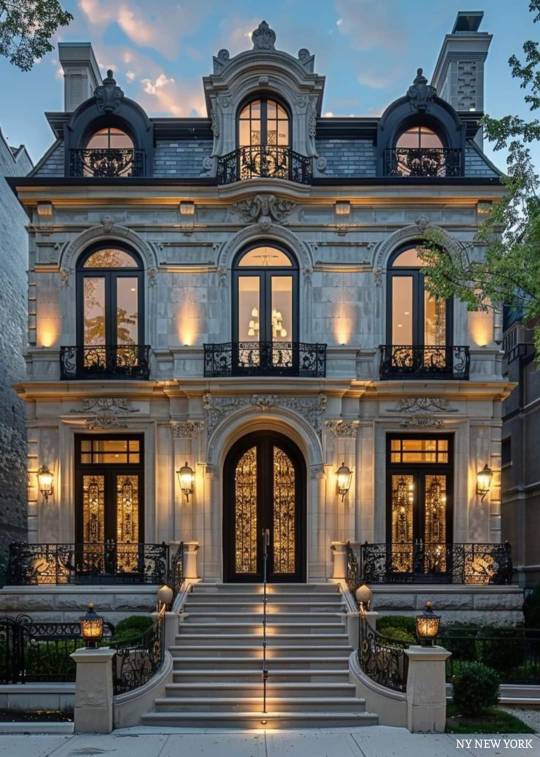
456 notes
·
View notes
Text
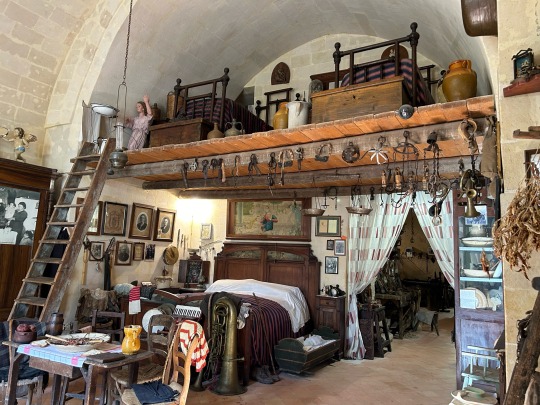


Matera, Italy is famous for the Sassi, small homes built into the rock that supports the city. The residents shared the space with their farm animals. They were lived in until the 1950s.
March 3, 2024
#Matera#house#old house#Italy#Italia#architecture#travel#wandering#original photography#iphonography#photographers on tumblr#photography#urbanexploration#history#lensblr#historical architecture#wanderingjana
610 notes
·
View notes